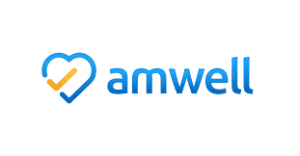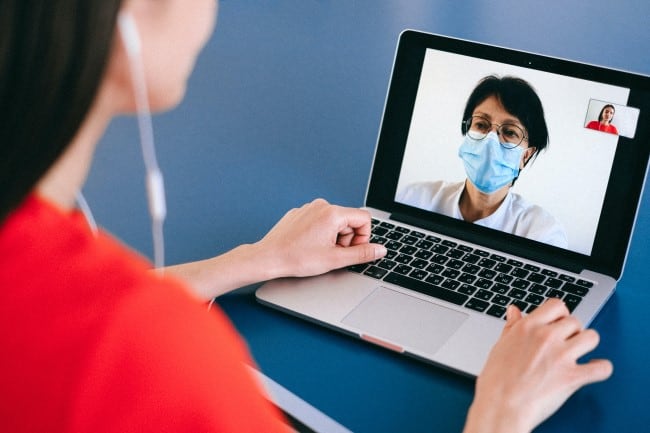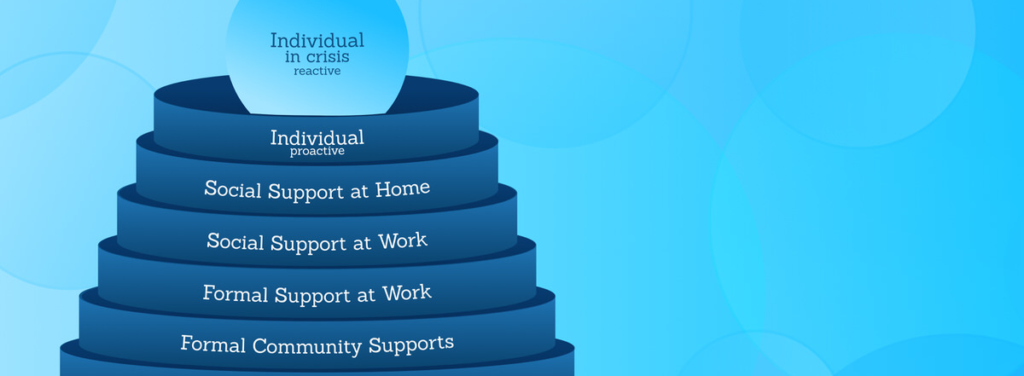 Danielle Russella, President of Strategic Partnerships at Amwell (formerly American Well), a telemedicine technology provider, has been there since the beginning. In the 15 years since Amwell’s founding, Danielle has seen tremendous changes in telehealth offerings and adoption. Trends that have been building over recent years were accelerated in 2020 as COVID upended traditional provider access and care delivery.
Danielle Russella, President of Strategic Partnerships at Amwell (formerly American Well), a telemedicine technology provider, has been there since the beginning. In the 15 years since Amwell’s founding, Danielle has seen tremendous changes in telehealth offerings and adoption. Trends that have been building over recent years were accelerated in 2020 as COVID upended traditional provider access and care delivery.
We had the opportunity to chat with Danielle recently about her role at Amwell, trends in telehealth, and the potential to improve care delivery to underserved areas.
_________________
 Give me the elevator pitch for Amwell.
Give me the elevator pitch for Amwell.
Amwell is a leading telehealth platform that connects and enables providers, health plans, patients, members, and innovators that are utilizing technology in some way, shape, or form, to deliver greater access to more affordable, higher quality care. I’ve been here since the beginning, so I can tell you that since Amwell’s founding in 2006, one thing has always remained true and that is the belief that digital healthcare can transform the way we deliver health and wellness services.
We offer a single comprehensive platform that supports a multitude of telehealth capabilities, everything from urgent and primary care to acute and post-acute care, to chronic disease and even catastrophic management – the full spectrum of care. We’ve been in business now for about 15 years powering telehealth for over 2000 hospitals, more than 55 health plans, and over 30,000 employer groups covering some 80 million lives.
What is your official role at Amwell?
I had the great fortune of joining Amwell’s two CEOs, doctors, Roy and Ido Schoenberg, shortly after the company’s inception, about 14 years ago. I’ve had several executive roles as the company has grown from about 20 people to now over 700+ people.
Today, I’m president of our strategic partnership organization at Amwell. I work at an enterprise level with some of the most progressive, innovative, and complex healthcare organizations in the world. It allows me to use my background in healthcare with health plans, providers, and employers, and technology. I come from a technology background, and I’ve been able to apply that to different parts of Amwell’s business. At the end of the day, much of what Amwell does is the enablement of care delivery leveraging technology.
How has COVID changed or accelerated the adoption of telehealth?
Make no mistake that, as an industry, telehealth was experiencing steady adoption and growth even pre-COVID. Clearly, the pandemic changed the industry dramatically, both from an awareness adoption and utilization standpoint. In fact, we did a recent consumer and provider survey. In 2019, only 8% of consumers used telehealth services. We’re now up at 22%. What’s even more astounding is provider usage and adoption – which was around 22% last year and is now up to 80% of physicians reporting having used telehealth in 2020.
This is astounding growth. In many respects, COVID forced many people to use telehealth for the first time. We also saw it being used across a multitude of uses, which really boosted a lot of those numbers. On the utilization front, at Amwell we saw average monthly visit volumes on our platform increase by more than 300% from the end of the first quarter to the end of the second quarter this year. . That’s pretty astounding.
Pre-COVID, what was the biggest challenge when it came to adoption? Was it trying to get consumers or providers to buy in, or both?
For a long while I would say one of the biggest challenges was awareness and utilization for both patients and providers. From a utilization perspective, the provider end of things was more complex because providers have workflows, EMRs and practice management systems. It’s trickier for a provider to adopt something new, especially technology that delivers care, because it needs to seamlessly work into their existing workflow and frankly, their lives. Sometimes technology can be complex, and it can be cumbersome, and providers don’t need another thing to worry about.
So providers were a little behind in really embracing telehealth, not because they didn’t see its value, but in many cases because they perceived it as maybe not naturally fitting into how they were caring for patients. Certainly, with COVID that has changed significantly.
Are there particular areas of care where you saw more usage either from patients or providers?
We’ve always believed that adoption and utilization would really change dramatically when telehealth and virtual care were prescribed by the provider. That theory could not have been truer during COVID. Providers for one reason or another were telling their patients, “We need to use technology, so I can deliver care to you.”
At Amwell, we’ve always believed that telehealth and utilizing technology to deliver health and wellness services could go beyond one-time urgent care interactions and be used for longitudinal care — running the gamut across the full spectrum of care – everything from specialty care to chronic disease management to pre-surgery, post-surgery, rehab, end of life, isolation, and catastrophic care. We saw all of these use cases exist pre-COVID, but certainly during the pandemic acceptance for the variety of ways telehealth could be used increased. We saw telehealth being used for some really interesting use cases from managing gestational diabetes, working with mothers and pregnant women, to telestroke and even catastrophic cases, for example: people dealing with cancer and chemotherapy treatment.
Moving forward, what other technologies are you looking at that you believe will allow you to do more things through telehealth?
One thing we are excited about that we think can absolutely contribute to greater telehealth adoption is connectivity to remote patient monitoring devices. These expand the possibilities of care that can be administered in the home or really anywhere outside of the hospital. These devices are things that can listen to the heart, they can look in the ear, they can really zoom in on a wound or something on the skin.
In telehealth, there’s always been a joke that you can’t reach through your computer and put your hands on a patient. But when we think about a connected device in the home coupled with telehealth, that allows us to do much more examination, listening, and looking virtually. We recently expanded our partnership with a company called TytoCare, which has done some really amazing things. They’ve created a handheld device – literally, you can hold it in the palm of your hand – and a provider or a caretaker can guide you on where and how to use it. We pair that with Amwell’s telehealth platform, and providers can help with self-examinations during a telehealth visit. Remote patient monitoring devices and other connected biometric devices like wearables are yet another promising area. We have some interesting things that we have already done with the Apple Watch.
Another area that’s getting a lot of attention these days is virtual primary care. Virtual primary care allows you to connect with and chose your PCP online. More importantly, it enables the patient to have an ongoing relationship with the same PCP. This is particularly important when we think of care as longitudinal. It also represents what’s possible when we think about how we can stitch together virtual and physical care. The idea is that you can come back and see the same online PCP after blood work or a specialty visit and use an intuitive online tool to weave those virtual and physical experiences together. That’s an area that we’ve seen emerging and being embraced—the next level of leveraging technology to deliver care.
Are you foreseeing changes that will impact communities that don’t have great access to health care?
Bandwidth continues to be an issue; lack of technology is also an issue. There are some remote areas in particular that don’t have access to hospitals or don’t have easy access to clinics in the community. Amwell offers another connected device called a telehealth kiosk. These are freestanding, physical kiosks, and we have stood them up in remote areas, low bandwidth locations, and placed them in public spaces in the community like a grocery store, library, or even in shelters. Kiosks still rely on bandwidth, but they have connected devices, big easy touch screens, and allow patients and virtual providers to interact wherever they are. We have even placed kiosks on RV units to bring care into communities affected by hurricanes and floods. The kiosk is like a self-contained virtual clinic. This is a way that we can not only project care in a rural area, but also bring care into a community that may not have any care at all.
What do you want the world to know about your work at Amwell?
For me, the importance of working at Amwell is that it is a mission-driven company that is making a difference in the world. We’ve been around a long time, and we had this idea that you can use technology to really profoundly impact how care is accessed. Rural, underserved – there are just so many different populations, and so many things that we can do. The fact that I get to stand behind that, and work for a company that Amwell stands this mission is incredible– it’s rare that you get to do something like that.



